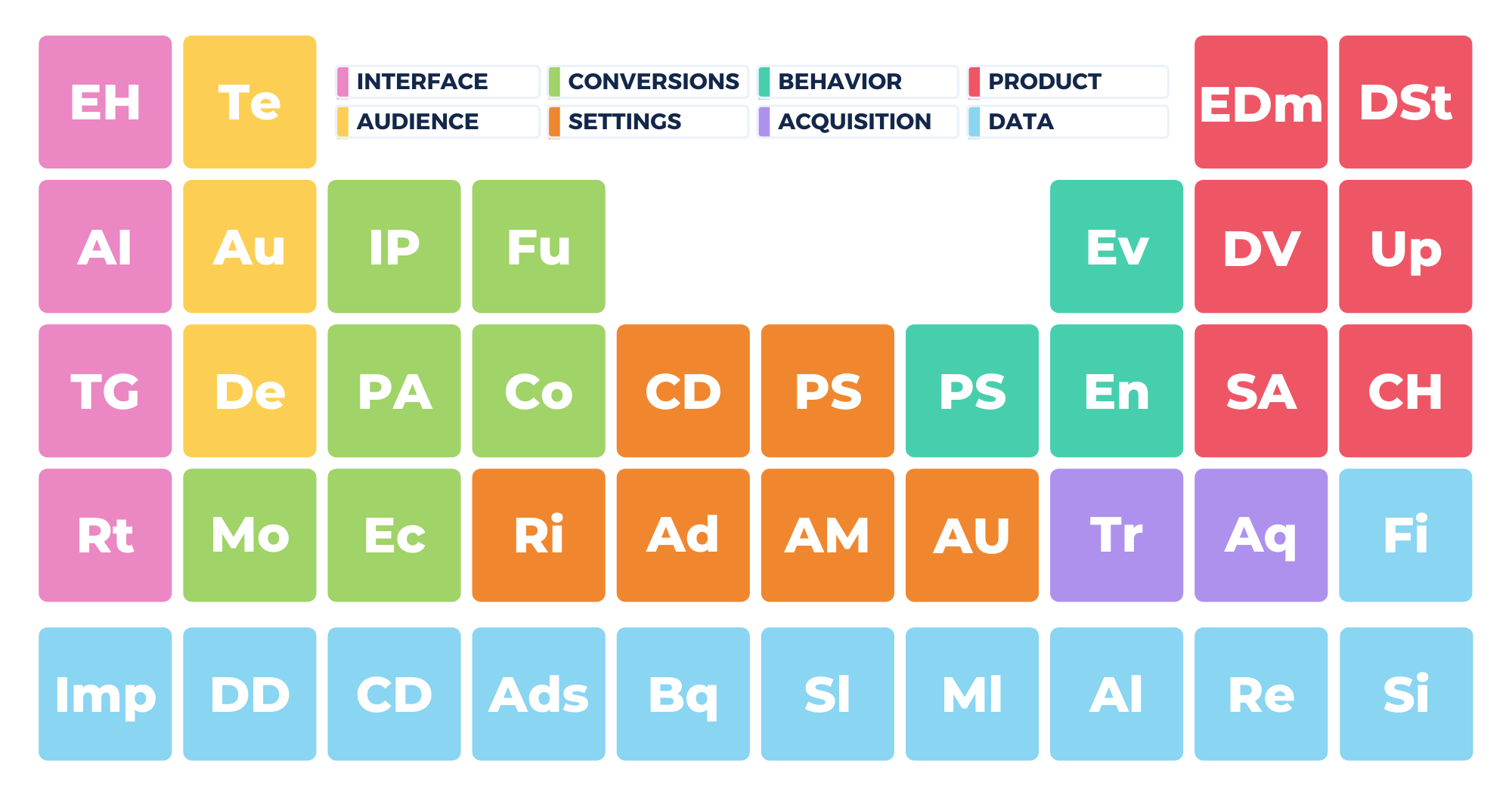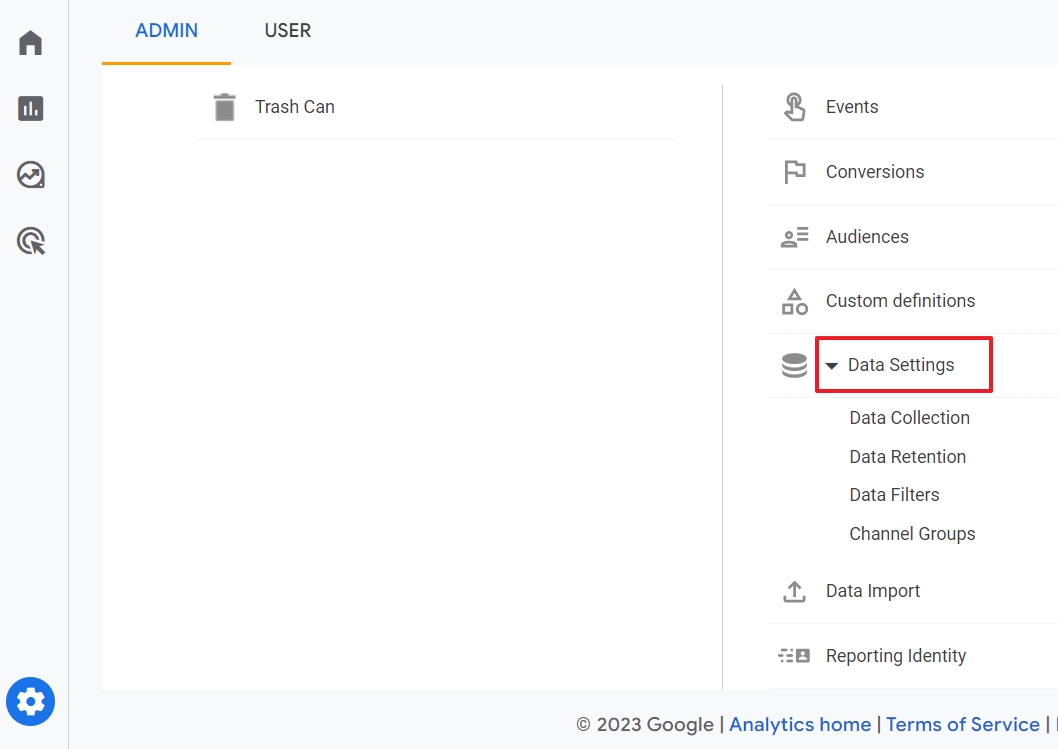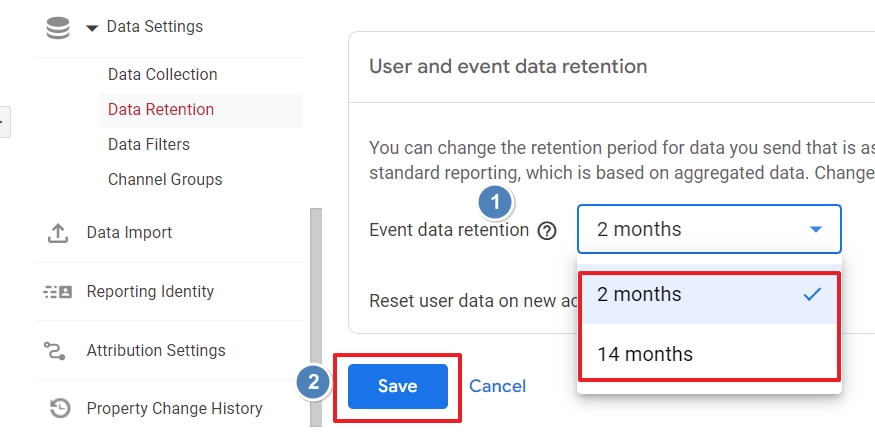The default Google Analytics 4 data retention period is set to 2 months only. That’s ideal if you are only interested in short-term analysis. But let’s be honest, unless you have just launched your website or web shop, you definitely need more historical data to thrive in the future…
Key takeaways
- The default Google Analytics 4 data retention period is two months.
- After that period, you will lose valuable data about your users.
- Luckily you can quickly change this in GA4 to 14 months.
On top of that, you have other options to keep your valuable data for a longer period.

DATA RETENTION
How long should you retain data in your GA account?

Google Analytics 4 data retention
Data retention controls allow you to manage how long Google stores your user data on their servers. In GA4, this period is by default set to two months.
If you are not familiar with GA, let me reassure you first that this does NOT mean you will only have access to data from visitors for the 2 last months.
You can still go back in time before that period.
However, if you stick to the default data retention setting, you won’t be able to do more profound historical analyses.
Having access to your historical data is essential. Without the ability to dive deep into your data, you’re losing the ability to do granular and comparative analysis over time.
If you’re just looking at standard reports day-to-day, then you might not need to make changes, but if you want to conduct deep analysis over time, you should extend your data retention to the full 14 months.
To understand the problem in more detail, let's look at how Google Analytics generates reports.
Aggregate reports in Google Analytics
Google Analytics aggregated data is the same thing as your canned reports.
aggregate data = canned reports
Canned reports are your standard ABC reports:
- Audience: if you are not sure about this, you can best read our article with some audience use cases
- Acquisition: you can read more about these reports in this article
- Behavior: exploration templates are the best way to understand what your users are doing on your site or app.
- Conversions.
These are your default reports. You can select a date range for these reports, and they generate in seconds. They are readily available, and they work how you want them to work.
Sampled data in Google Analytics
The opposite of aggregated data is something called sample data.
To learn more about sampling in Google Analytics, you can read this support article: About Data Sampling.
Data sampling powers all of our ad-hoc reports.
Sampled data = ad hoc reports

So here's the big problem with the data retention controls settings: While dumping your user data won't affect aggregated reports, purging this data will eliminate your ability to run ad-hoc reports on historical data.
Now you may not use these reports every day, but they are pretty significant.
And if you allow Google to expire your user data, you'll lose all these reports beyond the 14-month default period.
How your data retention settings impact Google “Analytics”
The ad hoc reports include a lot of features that are critical to data analysis. These are the features that rely on your sample data.
And they include things like: segments, table filters, secondary dimensions, and custom reports.
Without the ability to drill down into your data, Google analytics is just a reporting tool. If you want to get the most out of Google Analytics, don't compromise your ability to do historical analysis.
I don't want to see these Google Analytics changes affect anyone negatively. Most notably, those of you who love doing in-depth web analytics.
So, let’s see how to fix this.
How to change GA4 data retention settings?
To change your data retention settings in GA4, you need to have Administrator or Editor access rights. Then, follow these steps.
Step 1

Click “Admin” on the bottom left
Step 2

Under “Property,” click “Data settings”
Step 3

Click “Data retention”
Step 4

Change the month option and click “Save”.
You can choose between the default 2 months, or increase the data retention period for a maximum of 14 months. Confirm your choice by clicking on the Save button. It's that easy to save yourself from losing your advanced analytics features.
Compared to the 26 months you had available in Universal Analytics, this 14-month limit can still be too short for your needs. Luckily, in GA4, you have two other workaround options.
2 ways to extend the 14 month data retention in GA4
#1 Activate “Reset user data on new activity” in GA4
When you activate this option in the data retention settings, every time a user returns to your site, your selected period (2-14 months) will start over.

That is cool, but it only applies to the data of one user.
That means that you still risk losing historical data about users who didn’t visit your site again in the selected data retention period. To fix that, you can do the following.
#2 Maximize data retention with BigQuery
If you want to maximize your data retention, BigQuery is your best option. From that moment, your historical data will be safe.
If you are interested in this, head over to our post where I explain to you in detail how to link BigQuery with GA4.
This brings me to one more thing: why on earth does Google Analytics not allow you to keep your data for years?
To answer this question, we need to go back in time…
GDPR and GA retention
Before the GDPR went into effect on May 25, 2018, GA introduced the data retention settings. Before that period, you could analyze data back to the moment you had installed GA on your website.
When we published our post on the Google Analytics GDPR updates, we discussed the new data retention controls feature.
And it freaked me out.
I would even say I was more scared of how this setting would affect our analytics data than I am of clowns. And I am terrified of clowns!

I don't think the removals of ad-hoc queries from data retention controls are a direct consequence of GDPR. I think this change is Google cleaning house on expensive historical data storage when they have the opportunity.
Everyone is scrambling to interpret the last minute preparations needed for GDPR compliance. Meanwhile, big G recognized a significant opportunity to do a massive data dump during the confusion.
Google even said these controls wouldn't “affect most standard reporting based on aggregate data.” But, we need to read between the lines here.Google was telling you that if you allow them to purge your user data, you can still use your aggregate reports. What they don't mention is how dumping your user data affects ad-hoc reporting.

The default setting for data retention could compromise literally everything I love about Google Analytics.
Sacrificing this data is a significant change. And this change begs the question, is this truly a GDPR thing?
Now I've thought about this problem long and hard. And I am sure there will be a lot of questions about these changes. So let's address some of your potential concerns now.
Data retention and Google Analytics Q&A
What happens if you don't adjust your GA4 data retention controls?
As mentioned, the default data retention period is 14 months. So, if you don't adjust your settings, you'll still have a little over one year of historical data to analyze. But you won't be able to do historical analysis that goes back any further in time.
Are the features you could lose that important?
The importance of these features is open to user opinion.
But from my perspective, there's no argument about it. These features are critical to web analytics.
Secondary dimensions and table filters are hands down the most useful day-to-day features in Google Analytics. And I am willing to arm wrestle anyone that says otherwise.
Advanced segments are a close second on my list of top GA tools.
I can't imagine working in Google Analytics without advanced segmentation, and I don't want to!
Will data retention controls affect the Google Analytics API?
I can only imagine that once your user data is gone, it's gone. So, I am going to assume your data retention setting can affect your API calls. If there's no historical sample data to call on, the dimension or metric you're trying to use won't work.
I don't use Google Analytics for analysis, so why should I care about data retention controls?
Well, if you don't log in to Google Analytics very often you don't think web analytics is essential, I guess then, touché.

However, if you don't really use Google Analytics, I also wonder why you read all the way through this post.
Maybe you thought I was going to talk about scary clowns again? Nope. Losing segments is scarier than clowns.
If you don't use Google Analytics to its fullest, you should. And if you want to preserve your ability to someday use all the excellent tools in Google Analytics, then you should adjust your data retention controls!
Conclusion: change the default GA4 data retention period now
To sum up, we highly recommend adjusting your data retention settings from 2 months to 14 months.
Even if you’re not sure you’ll use all your historical data, having it collected for you is essential for serious analysis. Hop in there and make this adjustment to collect the data you’ll need for comparisons and explorations down the line.
And in the immortal words of the former Governor of California –
DO IT NOW!

While you are doing this, don’t forget to activate the reset period to keep a bit longer from users that revisit your site within this period.
If you want to keep your data even longer, BigQuery is definitely your best option.
